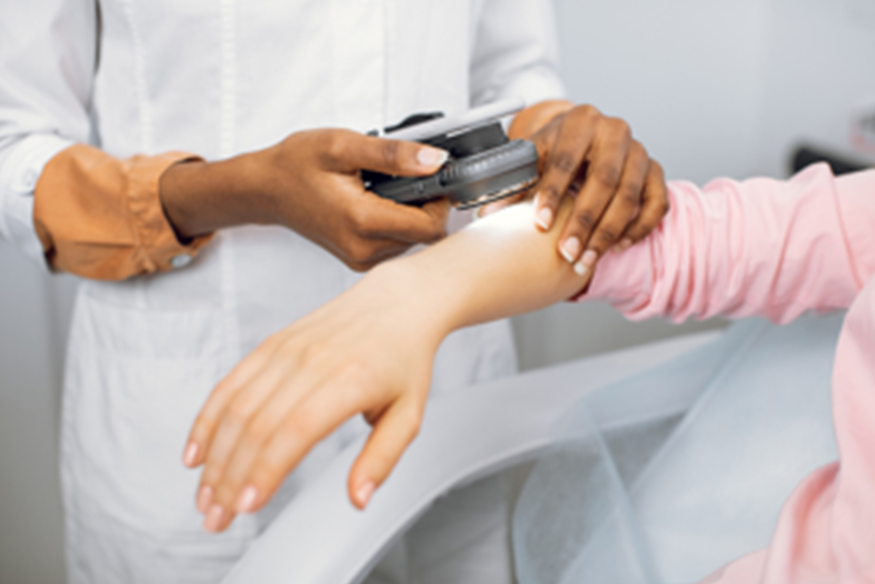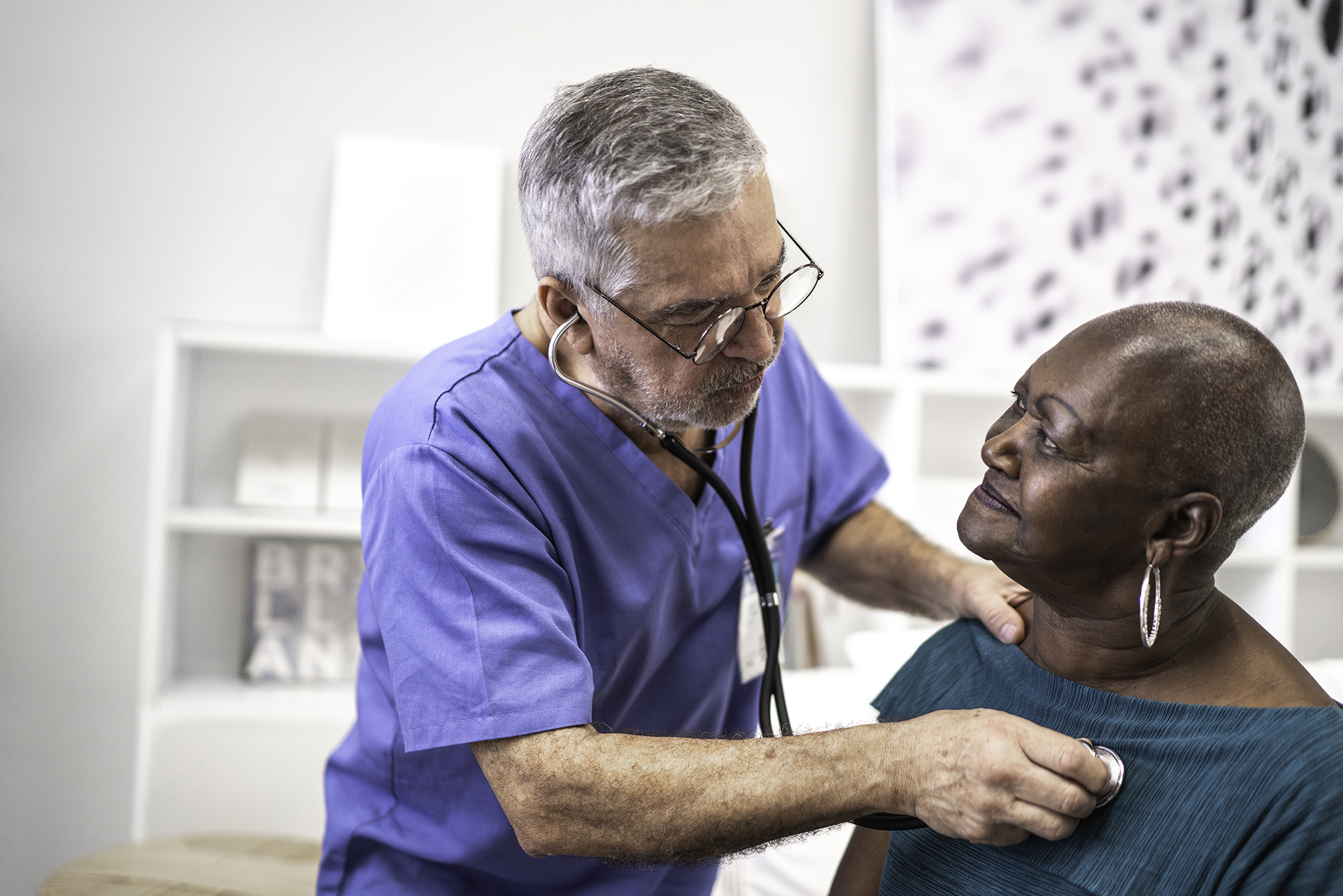Center News & Funding, Prevention & Control
May 03, 2023

May is Melanoma and Skin Cancer Awareness Month. With summer around the corner, there’s no better time to learn how to protect your body’s largest organ. We spoke with Kimberly Salkey, M.D., dermatologist at VCU Massey Cancer Center, to get the lowdown on skin cancer risk, screening and prevention – from top to bottom.
Sunscreen is for everybody. “Some people think, ‘If I don’t get sunburned then I don’t need to use sunscreen,’” said Salkey. “But it turns out that everybody, regardless of your skin tone, race or ethnicity, should be using sunscreen.” Even on a cloudy day, using sunscreen is important because ultraviolet (UV) rays penetrate the clouds.
In addition to cancer prevention, sunscreen also blocks UV rays that lead to signs of aging like wrinkling and discoloration. Salkey noted that people with darker skin tones can suffer more from uneven skin tone or discoloration from sun exposure.

People with darker skin tones can get skin cancers in areas not exposed to sun. “The most common form of melanoma in Black folks is called acral lentiginous melanoma, which appears as a discoloration on the palms of the hands, the soles of the feet and under fingernails,” said Salkey. “People may do a skin check but could be missing important places where they can screen themselves.”
Self-examination is as easy as the ABCs. Salkey referenced the “ABCDEs” of melanoma to guide anyone checking their own skin for early signs of skin cancer, which she recommends doing once a month. “Look at all of your skin everywhere. Use your hand mirror to look on your back, look on the bottoms of your feet, between your toes, look at your fingernails.” If you notice one of these characteristics in a mole, you should have it checked by a dermatologist:
“If all else fails, look for the ugly duckling – something that just looks different than all your other spots,” Salkey added.
There aren’t hard and fast guidelines about skin cancer screening, unlike for other types of cancer. In general, if you have a personal or family history of skin cancer, you should get a baseline skin check. For people without that history, other considerations that indicate the need for a skin check include:
Clothing may not be as protective as you think. Unless fabric has a UPF rating of 30 or higher, it isn’t providing you protection from the sun. Salkey suggests a layered strategy, especially when you’re getting children ready for a day in the sun: “Get as much sunscreen on as you can, then put the rash guard on, then put on the hat and sunglasses.”
Think about your incremental exposures. Even if you work a 9-5 desk job, you may have more sun exposure than you think. “That 30-minute commute you have twice a day is enough to get you some sun exposure,” said Salkey. “Even if you have a window in your office: While regular window glass blocks mostly UVB light, UVA light can still penetrate, and both types are associated with skin cancer development.” Other daily tasks like going to check the mailbox or walking the dog can add up to more sun exposure.
Salkey emphasized sun protection and self-exams as the most important tactics for skin cancer prevention, adding, “Though melanoma is one of the most serious types of skin cancer, it’s highly treatable and curable when it’s detected early.”
Written by: Annie Harris
Center News & Funding, Research, Prevention & Control, Clinical, Technology
Breast imaging expert explains how new FDA mammogram rules help patients make informed decisions about their careSep 27, 2024
Clinical, Research, Center News & Funding
Get C-SMART: Massey neuropsychologist seeks to enhance brain wellness in neuro-oncologySep 23, 2024
Center News & Funding, Community Engagement & Health Equity, Massey 50
Massey hosts congresswoman, highlights efforts to reduce cancer burden for all VirginiansSep 16, 2024

Treatments in clinical trials may be more effective or have fewer side effects than the treatments that are currently available. With more than 200 studies for multiple types of cancers and cancer prevention, Massey supports a wide array of clinical trials.

Massey supports hundreds of top cancer specialists serving the needs of our patients. Massey’s medical team provides a wealth of expertise in cancer diagnosis, treatment, prevention and symptom management.